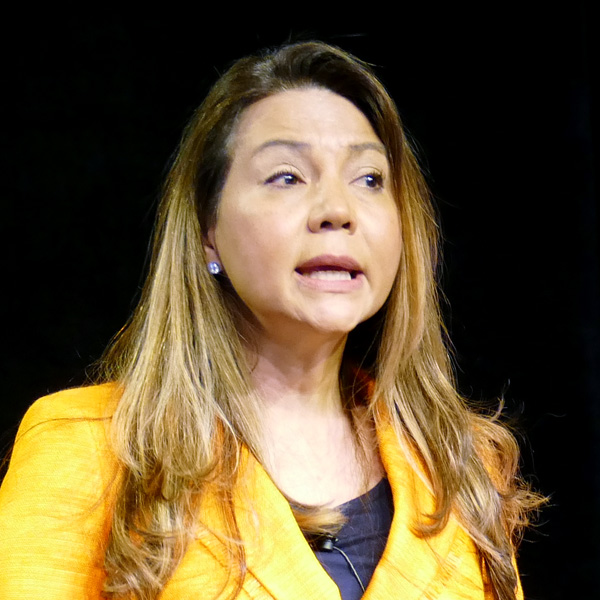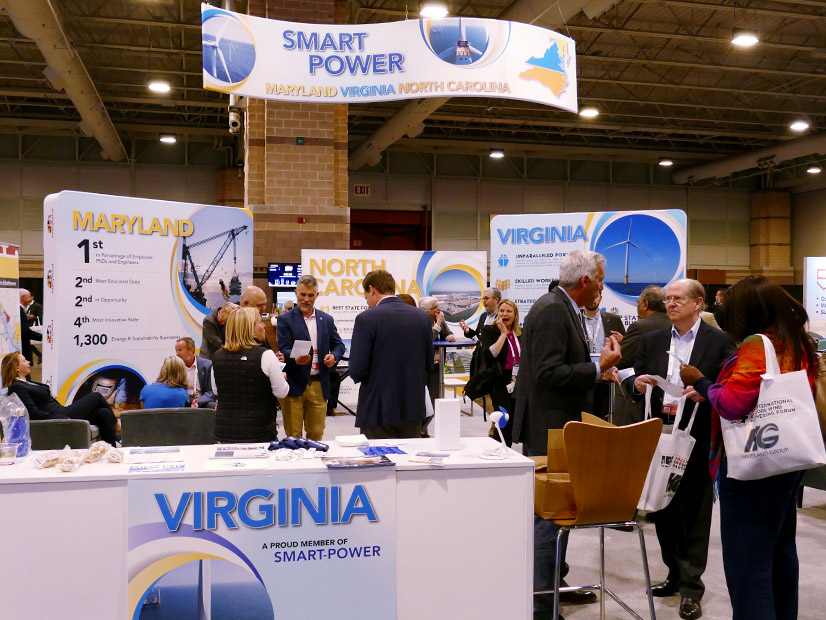
ATLANTIC CITY, N.J. — The U.S. offshore wind industry is beginning to deliver on port improvements and other infrastructure, but it’s also experiencing some growing pains, attendees at the Business Network for Offshore Wind’s (BNOW) 2022 International Partnering Forum said last week.
The event drew about 2,700 people and 300 exhibitors from 25 countries.
BNOW CEO Liz Burdock noted the progress the industry has made since last year’s IPF: the $4.37 billion New York Bight auction; the entry of six new offshore wind developers into the U.S. market; and the Biden administration’s plans to lease seven new wind energy areas by 2025, including the West Coast and the Gulf of Mexico.
With the latest procurements from Maryland and Massachusetts, the U.S. now has 19,580 MW in offshore wind under development.
“We’ve had nine primary component manufacturers start to establish operations and manufacturing on the East Coast. We’ve had more than 1,000 sub-supplier contracts given to businesses across 33 states,” Burdock said. “Offshore wind is becoming a national industry.”
Jane Cohen, executive director for New Jersey Gov. Phil Murphy’s Office on Climate Action, expressed pride in the state’s $500 million investment in the New Jersey Wind Port in Salem County. “There are people there right now working to prepare that for the marshalling, the manufacturing. Five years ago, we didn’t have that; three years ago, we didn’t have that. And today we have a real infrastructure asset for offshore wind in southern New Jersey. Same with our … new monopile facility in Paulsboro. The first monopile is arriving on Friday.”
More ports will be needed, industry officials say, to reach the Biden administration’s goal of 30 GW of OSW by 2030.
“It’s no surprise to anyone that ports are a significant limitation. They represent some of the longest lead … infrastructure improvement items required,” Joshua Weinstein, vice president and head of offshore development for Invenergy, said during a panel discussion Wednesday. “The ports are the places where manufacturing is completed. The ports are the places where staging is completed. They are the key enablement to not only delivery of components, but also installation of components. And that is, by and large, the scarcity that we have here in the U.S.”
Cost Pressures
There was much optimism at the conference. Clint Plummer, CEO of Rise Light & Power, a subsidiary of LS Power, said offshore wind is becoming more competitive with other sources of generation.
“I’ve been in this industry for 15 years, and when we started this back in 2007, offshore wind was seen as this wildly expensive science project. Cape Wind was way too expensive, right? The Delaware project was way too expensive,” he said, referring to two canceled projects. “But now, projects like South Fork [off Long Island] are showing that it’s actually cheaper to use offshore wind to supply renewables to densely populated coastal areas.”
Others, however, said they are concerned by thin margins, rising lease prices and supply chain problems.
Stephen Bull, executive vice president for renewables for Aker Solutions, an Oslo-based engineering company, cited research that every offshore wind turbine in Europe generates 10 million euros in economic activity annually. Europe has about 5,500 offshore wind turbines producing 25 GW.

“There are about 250 factories in Europe producing turbines and their parts. And the wind sector employs about 300,000 people in offshore wind alone,” he said.
But he said many in the industry are struggling with thin profit margins, in part because of supply chain problems resulting from the COVID-19 pandemic and Russia’s invasion of Ukraine.
“Pushing all this risk back onto the supply chain is not the answer,” he said. “A new deal between developers and the supply chain is required. The traditional procurement model of playing supply chain companies against each other, overloading them with risk, obsessively pushing down towards lump sum contracts — that really cannot continue.”
Instead, Bull called for a “collaborative approach.”
“Some examples could be setting levelized cost of energy targets together; incentivizing around value improvements; ensuring a new level of transparency or ‘open book’ approach; employ a most-likely cost concept for greater risk sharing; and also defining a healthier mix between reimbursable and lump sum contracts,” he said. “We need to devise a risk-reward structure that gives sustainable rewards for everybody. Perhaps the U.S. is the market that we can crack the code for this.”
“Market volatility and cost competitiveness have become key industry challenges,” said Laura Beane, president of Vestas North America, which will supply turbines for the 2.1-GW Empire Wind project. “The U.S. market will need to adapt to build and maintain an economically viable offshore industry that is sustainable over the long term and free from the boom-and-bust cycles that have largely defined the clean energy buildout here.”
Plummer also expressed concern.
“Offshore wind leases are now really expensive. The New York Bight auction showed that for the first time in the history of American offshore wind industry, the cost of the lease itself is now going to be a non-trivial part of the overall capital expense of that project and, therefore, a non-trivial cost to ratepayers,” he said.
Federal Reinvestment Sought
BNOW’s Burdock called for a “national industrialization strategy,” saying the industry was not capturing the value it will provide in economic benefits, energy security and mitigating climate change.
“Wedges between social and private costs or returns lead to inefficient markets, and in some cases, they may even prevent markets from emerging. A low-cost pricing structure could eventually hold this industry back,” she said.
“The federal government and Congress must match the states’ swift and bold actions to create an offshore wind market with equally swift and bold actions to create a U.S. offshore wind domestic supply chain. We need incentives, policies and programs that help businesses overcome challenges and create resiliency.”
Sam Eaton, executive vice president of offshore development in the Americas for RWE, also said the federal government should do more to nurture the industry.
“The states have done a fantastic job. … I think we can’t say enough about all the great work that’s been done over the last five years. But I think at the federal level, there’s a little bit more we can do. And I think the $4.5 billion that we’re talking about for New York Bight offers one of those great opportunities,” he said.
“That’s money that should be reinvested in this industry, to help us make the clean energy transition.” (See Fierce Bidding Pushes NY Bight Auction to $4.37 Billion.)
Invenergy’s Weinstein agreed, calling for investment in risk mitigation, workforce training and ports development.
Despite the growing pains, Bill White, CEO of Avangrid Renewables, said the industry has a solid foundation.
“The problems that we have as an industry are beautiful problems to have. We are working too hard, and we’re too busy. We’ve got too many [requests for proposals] to respond to. We’ve got too many contracts to deliver. We’ve got too many projects to negotiate,” he said. “Isn’t this what we all wanted?”


